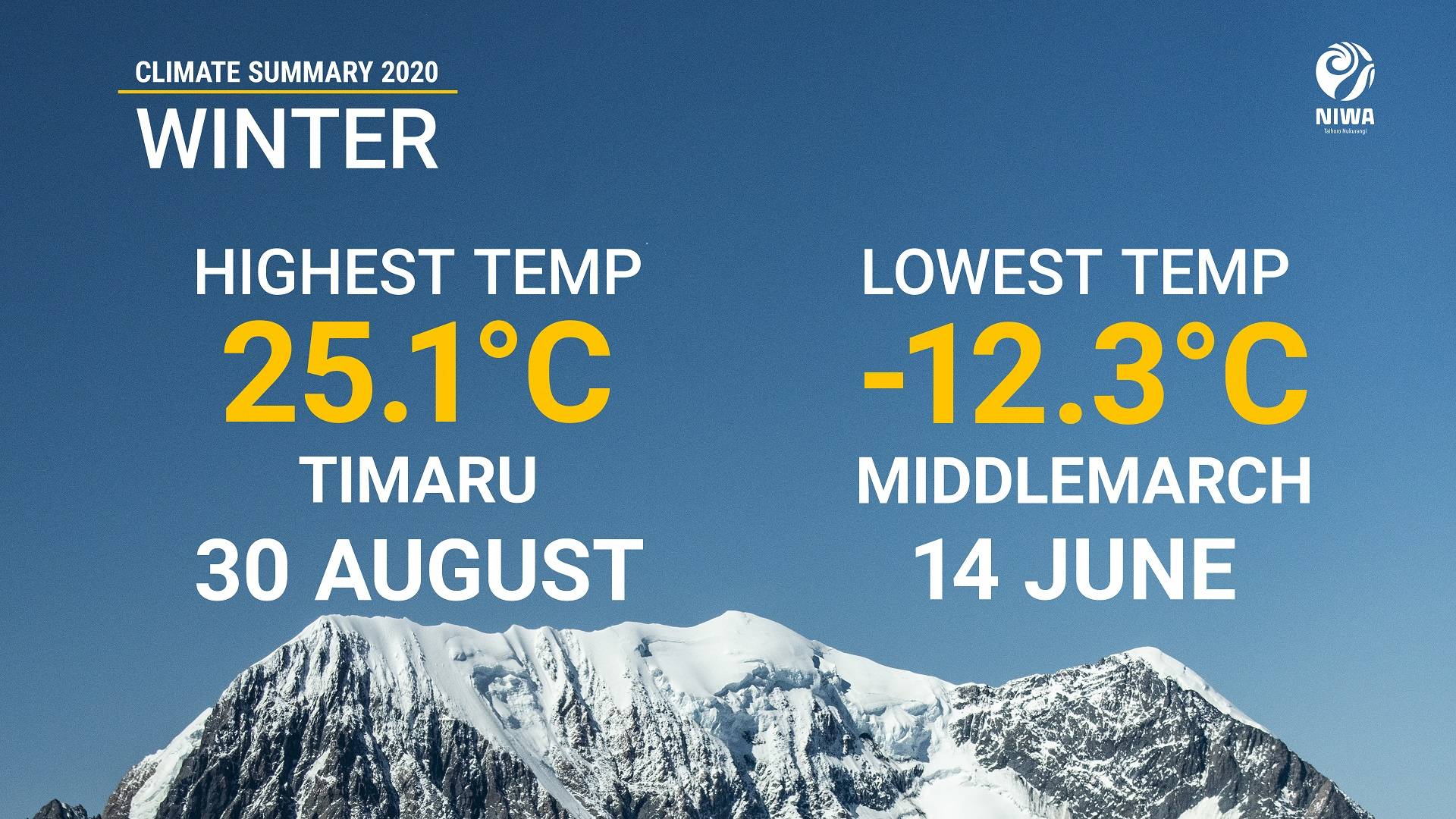Winter 2020 – NZ’s warmest winter on record
New Zealand has just experienced its warmest winter on record, according to official NIWA climate data.
NIWA’s Seven Station Temperature Series, which began in 1909, shows the 2020 winter was 1.14ᵒC above average, just nudging out winter 2013 from the top spot, which was 1.08ᵒC above average.
This year’s result also means seven of the 10 warmest winters on record in New Zealand have occurred since the year 2000.
Seventeen locations observed record breaking mean winter temperatures, with an additional 53 locations ranking within their top four warmest winters.

NIWA forecaster Ben Noll says the winter warmth can be attributed to several factors:
- More sub-tropical northeasterly winds than normal, particularly in the North Island. This brought warmer air toward New Zealand from the north
- Sea surface temperatures above average during winter, especially August. As an island nation, New Zealand’s air temperatures are strongly influenced by the seas surrounding it
- Air pressure was higher than normal, particularly to the east. This contributed to a sunnier than normal winter in much of the South Island and lower North Island
- Climate change – the warmth over winter is consistent with New Zealand’s long-term trend of increasing air temperatures.
The highest recorded winter 2020 temperature was 25.1ᵒC on August 30 in Timaru. This was the highest temperature recorded there during winter since records began in 1885 and the equal 4th warmest winter temperature on record for New Zealand as a whole.
The lowest temperature was -12.3°C, observed at Middlemarch on 14 June.
Of these locations the most anomalously warm (i.e. largest deviation from average) was Farewell Spit, where mean daily temperatures of 13.0°C were experienced. This is 2.8°C more than the winter average and the warmest on record since records began there in 1971.
Furthermore, mean maximum (i.e. daytime) temperatures at this location were 3.1°C warmer than average, while mean minimum (i.e. night-time) temperatures were 2.3°C warmer than average (these are also the largest anomalies in their respective categories).
Kaikohe had its second wettest winter on record, with 935mm of rain recorded for the season, which was 187% of normal. Records began in 1956.
At the opposite end of the scale, Reefton had its second driest winter on record with just 291 mm of rain recorded over three months – or 54% of normal. Records began in 1960. Much of the middle and upper South Island observed below or well below normal rainfall totals.
It will come as no surprise that the highest one-day rainfall occurred in Northland in mid-July. Kaikohe and Whangarei received 262 and 251 mm respectively on July 17. This is the highest one day rainfall amount observed for both locations during winter. Kaikohe records began in 1956 and Whangarei in 1943.